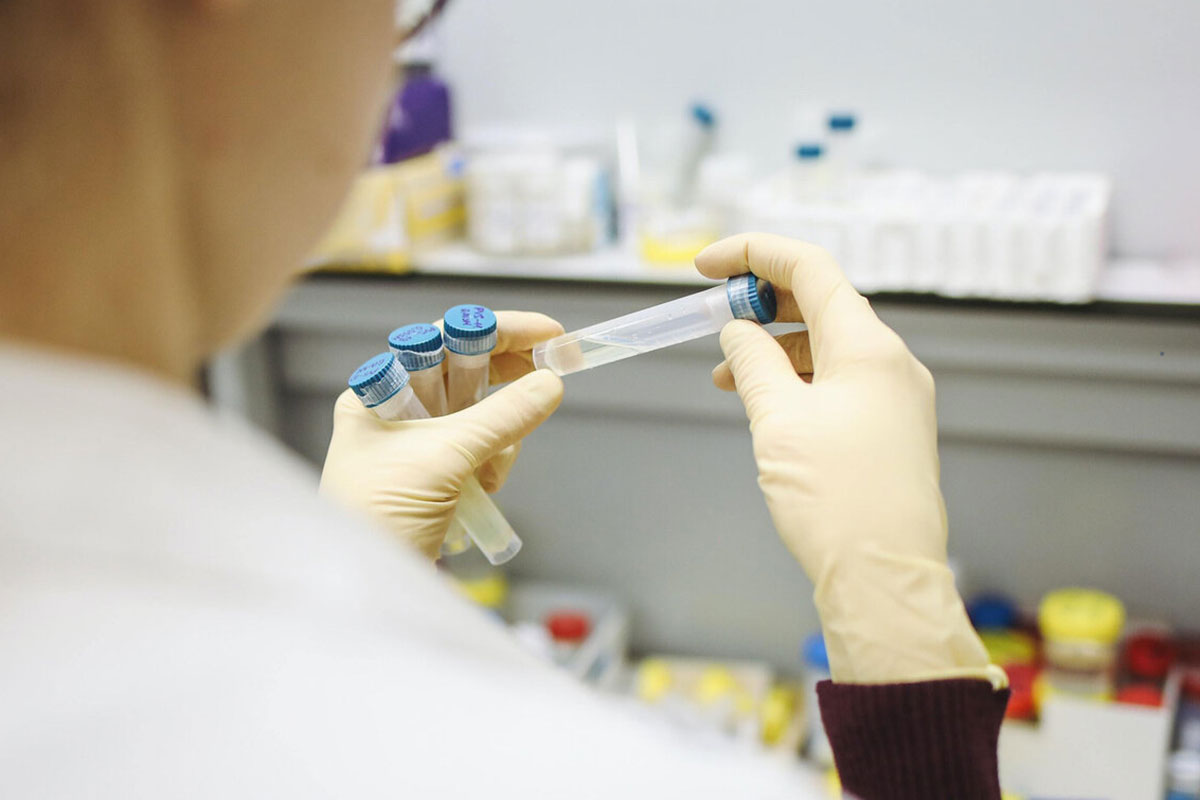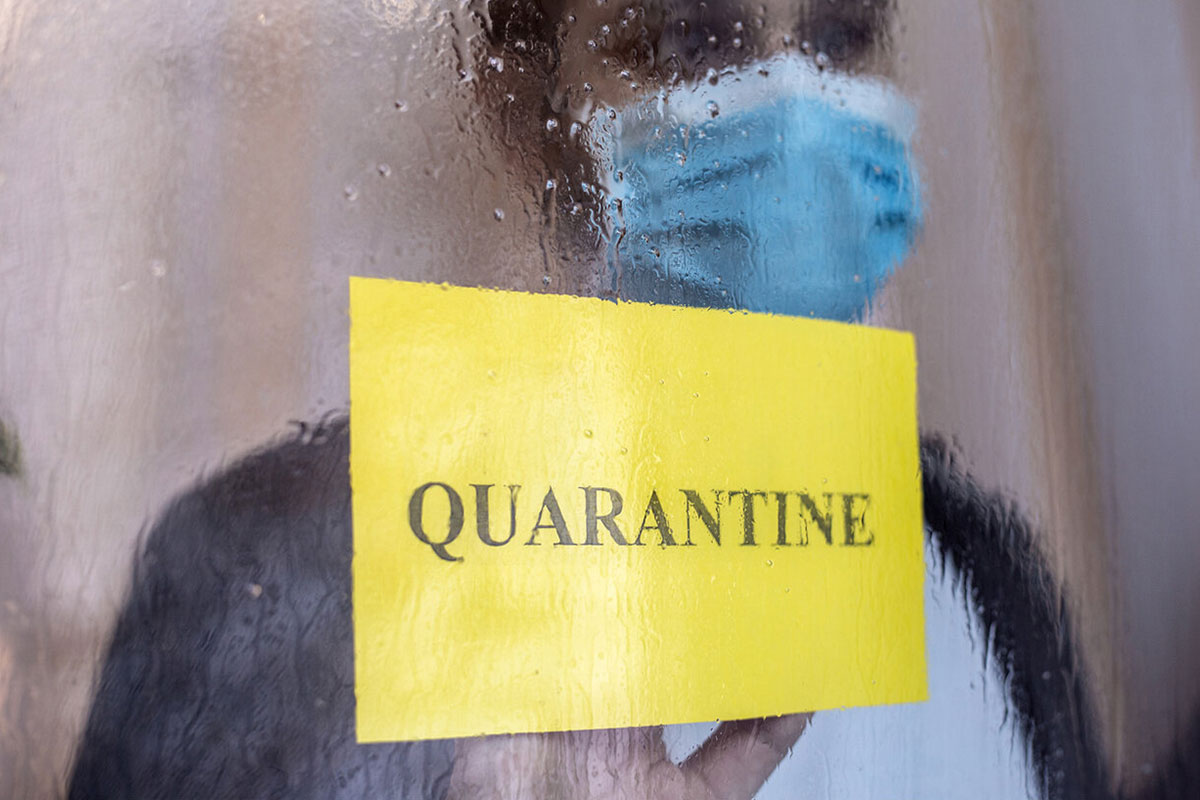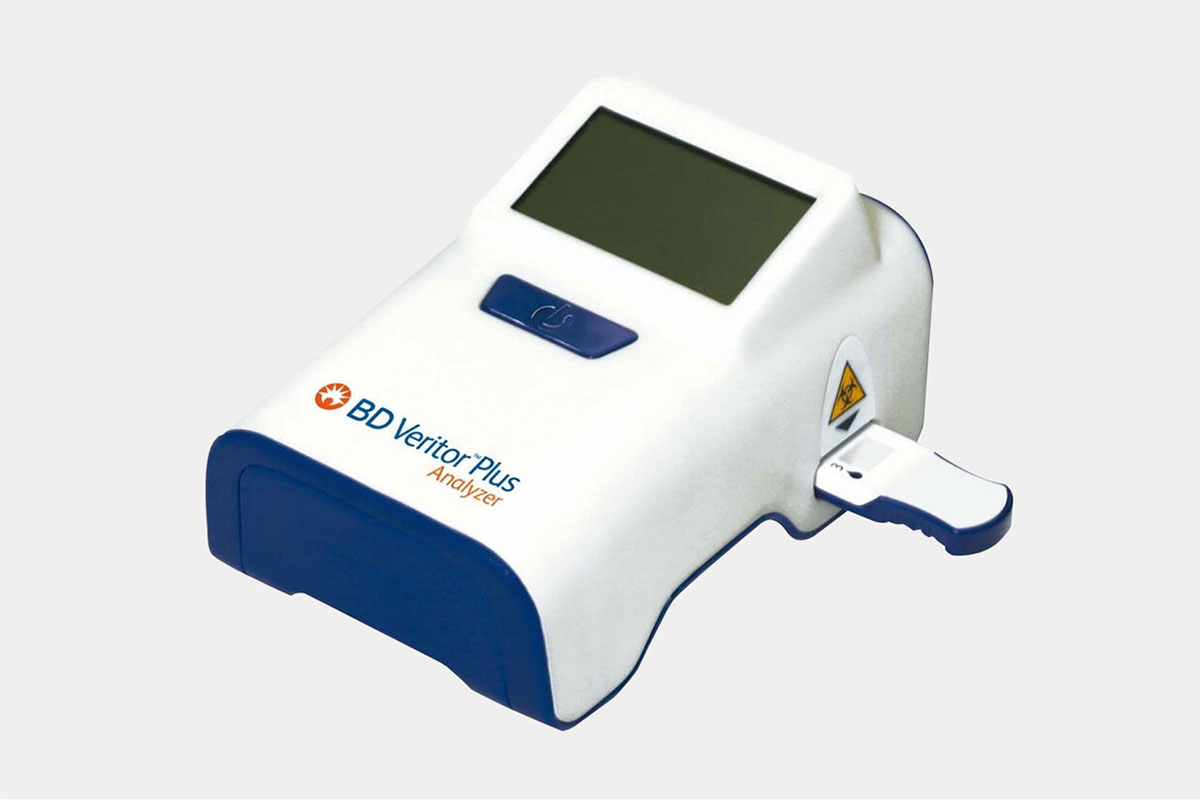Should we test for past or present SARS- CoV-2 infection prior to vaccination?
The current CDC guidelines regarding SARS-CoV-2 vaccination state that almost every person age 16 and over (Pfizer mRNA vaccine) or 18 and over (Moderna mRNA vaccine and Janssen vaccine) can be immunized without knowledge of prior infection status, as long as the person is not known to be infected with SARS-CoV-2 at the time of vaccination. According to the CDC, “Viral testing to assess for acute SARS-CoV-2 infection or serologic testing to assess for prior infection for the purposes of vaccine decision-making is not recommended.” The CDC does not promote testing before vaccination, largely because it believes it is safe for the majority of the population, wants to simplify the vaccination rules, and instill confidence in vaccination in order to reach herd immunity and reduce loss of life. However, the CDC outlines some examples of vaccine precautions and contraindications. Some physicians and researchers believe that testing to determine the status of infection and immunity prior to vaccination can be beneficial.
Complete information from the CDC regarding mRNA vaccinations can be found here.
Cases where testing for SARS-CoV-2 infection or immunity before vaccination may be beneficial:
1. Testing for SARS-CoV-2 infection before vaccination can help reduce the chance of post-vaccine inflammation exacerbation.
The CDC states: “Persons… who have had a known COVID-19 exposure should not seek vaccination until their quarantine period has ended to avoid potentially exposing healthcare personnel and other persons to SARS-CoV-2 during the vaccination visit. ”The purpose of this caution is to protect the spread of SARS-CoV-2 to health care personnel, and not to protect the infected individual, because the CDC deems it safe to receive a vaccination if infected.
However, some physicians believe it is best to defer vaccination until SARS-CoV-2 infection has resolved for another reason: a compounding effect of simultaneous inflammatory response to infection and the vaccine. In other words, infection produces inflammation, and vaccination also produces inflammation. The level and severity of inflammation resulting from infection and vaccination varies from person to person. When infection and post-vaccination inflammation occur at the same time, the effect may exacerbate the inflammation response in the body.
Individuals tested for SARS-CoV-2 infection before vaccination can benefit from removing the possibility of vaccination inflammation exacerbating concurrent SARS-CoV-2 infection inflammation.
2. Testing forSARS-CoV-2 infection before vaccination helps distinguish the cause of post-vaccination symptoms.
If a person is infected with SARS-CoV-2 at the time of vaccination, then it will not be clear whether symptoms that develop after vaccination arose as a result of infection (including symptoms that may require antiviral treatment), or whether symptoms that develop after vaccination arose as a result of vaccination side effects (which may be reportable and require different management than symptoms that arose from active illness).
Individuals tested for SARS-CoV-2 infection before vaccination can benefit from the ability to distinguish symptoms of vaccination from symptoms of illness.
3. Testing for SARS-CoV-2 infection and immunity before vaccination can help with vaccine risk-benefit assessment of patients considered at higher risk of serious side effects from the vaccine.
a. Anaphylaxis
Although no anaphylactic reactions were reported from either the Pfizer or Moderna vaccines during clinical trials, anaphylactic reactions have been reported following administration of the mRNA vaccines outside of the clinical trials. Anaphylaxis after receiving an mRNA vaccine is approximately ten times more likely than anaphylaxis after flu vaccination, and up to 100 times more likely than anaphylaxis with other vaccines in general. There is also a chance of anaphylaxis with the Janssen vaccine, although very small.
https://www.cdc.gov/mmwr/volumes/70/wr/mm7002e1.htm
https://www.cdc.gov/mmwr/volumes/70/wr/mm7004e1.htm
Although anaphylaxis after SARS-CoV-2 vaccination is more likely to occur in those who have experienced anaphylaxis or allergies in the past, it has also been reported in those without a history of allergies. The CDC page “Managing Anaphylaxis” after mRNA vaccinations can be found here:https://www.cdc.gov/vaccines/covid-19/clinical-considerations/managing-anaphylaxis.html
The CDC contraindicates vaccination for those who have a history of allergic reaction of any severity (including anaphylaxis) to a previous dose of a SARS-CoV-2 vaccine or any component of the vaccines, including polyethylene glycol (PEG) and polysorbate. The CDC states: “Persons with a precaution to vaccination should be counseled about the unknown risks of experiencing a severe allergic reaction and balance these risks against the benefits of vaccination.”
For individuals with any history of anaphylaxis, the CDC lists considerations that can be used to conduct a risk assessment for SARS-CoV-2 vaccination, to be discussed with a physician. This assessment should include a person’s risk of exposure to SARS-CoV-2, the person’s risk of severe disease or death from SARS-CoV-2 (depending on age and underlying medical conditions), and whether the person has previously been infected with SARS-CoV-2.
Although almost all cases of anaphylaxis can be treated in the medical setting, testing forSARS-CoV-2 infection and immunity prior to vaccination in individuals at higher risk for anaphylaxis could help assess an individual’s risk versus benefit of vaccination.
b. Frail, elderly population
In mid-January 2021, as Norway began immunizing its population with the mRNA vaccine, almost 0.1% of the people who were in the initial wave of vaccines died. The deaths occurred entirely in those age 75 and older. After review, the World Health Organization determined that the deaths were expected in the population of frail, elderly individuals, and that the benefits of the vaccine outweighed the risks:https://www.bmj.com/content/372/bmj.n149
Despite these findings, the Norwegian government has since contraindicated the vaccine to people over the age of 75.
Around the same time, the UK reported 143 deaths shortly after vaccination of elderly people and those with underlying illness, but the UK Medicines and Healthcare Products Regulatory Agency reported vaccination was not the cause: https://assets.publishing.service.gov.uk/government/uploads/system/uploads/attachment_data/file/960861/Coronavirus_vaccine_-_weekly_summary_of_Yellow_Card_reporting.pdf
Amid these occurrences, the CDC believes the mRNA vaccine is safe, but some physicians contraindicate the mRNA vaccine in the frail, elderly population.
Also, one of the main databases of post-vaccination side effects is from self-reported symptoms using a smartphone app called VSAFE. However, the elderly population is unlikely to use this app, and so this database underestimates the number of side effects in the population, particularly among the elderly.
Testing for SARS-CoV-2 infection and immunity prior to vaccination of the frail, elderly population could help assess an individual’s risk versus benefit of vaccination.
C. Guillain-Barre syndrome (GBS)
The CDC states that those with Guillain-Barre syndrome are not contraindicated from the SARS-CoV-2 vaccines. However, some doctors believe that individuals with a history of post-influenza-vaccine GBS should not receive these vaccines, because they could stimulate a similar response. Physicians of patients with a history of GBS can perform a risk assessment of the risk versus benefit of the vaccine.
Testing for SARS-CoV-2 infectionand immunity prior to vaccination of those with a history of GBS could help assess an individual’s risk versus benefit of vaccination.
4. Testing for SARS-CoV-2 infection and immunity before vaccination can help with vaccine risk-benefit assessment of patients with conditions for which there is very little or no data.
a. Pregnancy
There is very little data on the safety of the SARS-CoV-2 vaccines in pregnant or lactating women, although the CDC believes the risk may be low. Pregnant or lactating women are allowed to choose if they receive a vaccine. However, given that there are other vaccines that are contraindicated in pregnant and lactating women, and there is very limited data on SARS-CoV-2 vaccines in pregnant and lactating women, some physicians advise against it.
Those who have conditions where there is little to no vaccination data, such as pregnancy, could benefit from being tested for SARS-CoV-2 infection and immunity prior to vaccination, in order to help assess the risk versus benefit of vaccination.
b. Other conditions for which there is little to no data
Other conditions for which there is very little to no SARS-CoV-2 vaccine study data, but for which the CDC believes are safe to take the vaccine, include the following:people with HIV or other immunocompromising conditions, people who take immunosuppressive medications, people with autoimmune conditions, people with Bell’s palsy, and people with dermal fillers.
Those who have underlying medical conditions where there is little to no vaccination data could benefit from being tested for SARS-CoV-2 infection and immunity prior to vaccination, in order to help assess the risk versus benefit of vaccination.
5. Testing for SARS-CoV-2 infection and immunity before vaccination can help conserve doses of vaccine for those with a greater immediate need and higher risk of infection.
The CDC states: “…while vaccine supply remains limited, persons with recent documented acute SARS-CoV-2 infection may choose to temporarily delay vaccination…”
The CDC states that it is not necessary to get a vaccine if you have been infected with SARS-CoV-2 in the past three months. While various researchers have reported varying lengths of time of immunity, recent research indicates that infection can protect from re-infection for at least five months: https://www.medrxiv.org/content/10.1101/2021.01.13.21249642v1
There has not yet been a sufficient length of time for the CDC to define the longevity of post-infection immunity, so currently, the general rule is three months.
Individuals who are tested prior to vaccination and confirmed to have SARS-CoV-2 infection or immunity could choose to delay vaccination, conserving the vaccine supply for those who have no immunity to the virus.
6. Testing for SARS-CoV-2 infection and immunity before vaccination may provide an option of receiving only one dose of the two-dose mRNA vaccine.
Although the CDC recommends two doses of the mRNA vaccine for almost everybody, some physicians and researchers think that one dose is sufficient for those who have been infected:
https://www.medrxiv.org/content/10.1101/2021.01.30.21250843v2.full-text
One argument against giving only one vaccine dose to those who were infected with SARS-CoV-2 is that it could provide a confusing precedent to the public. However, some physicians and researchers believe that a full course of vaccination is not necessary for those who have been infected and have immunity.
Individuals who are tested prior to vaccination and confirmed to have SARS-CoV-2 infection or immunity could decide with their health care provider to delay or forego immediate vaccination, thus reserving the supply of vaccines for those people who are at higher immediate risk of infection.
7. Testing for SARS-CoV-2 infection and immunity before vaccination can help prepare for the risk of side effects.
Approximately 85% of all people who receive the mRNA vaccines from Pfizer or Moderna experience at least one post-vaccination symptom, including but not limited to pain, swelling, erythema at the injection site, and localized axillary lymphadenopathy on the same side as the vaccinated arm. Approximately 70% experience systemic symptoms such as fever, fatigue, headache, chills, myalgia, and arthralgia. These symptoms are more frequent and severe following the second dose of the mRNA vaccine.
According to the CDC and post-vaccination data, those who have recovered from SARS-CoV-2 infection prior to vaccination are more likely to have severe side effects to the first mRNA dose than those who have never been infected. Those who have never been infected with SARS-CoV-2 are more likely to have severe side effects to the second mRNA dose than the first dose.
Because mRNA vaccine side effects commonly include flu-like symptoms lasting a couple of days, it would be helpful for those getting vaccinated to prepare in advance for post-vaccine symptoms. For example, hospital staff are advised to stagger vaccination of employees, so that there are not a significant number of people simultaneously calling out sick from work.
Side effects from the single-dose Janssen vaccine are possible, but typically shorter duration and less severe than the side effects from the vaccines of Pfizer and Moderna.
Individuals who are tested for SARS-CoV-2 infection and immunity prior to vaccination could benefit from knowing the chances of enduring more severe side effects after the first or second vaccine dose.
8. Testing for SARS-CoV-2 cellular immunity before vaccination can provide valuable information regarding previous exposure to SARS-CoV-2 in the significant portion of the population that does not have detectable antibodies to SARS-CoV-2.
A weak antibody response that wanes quickly might be the reason why many people who tested positive for SARS-CoV-2 had no antibodies a few weeks or months later. A lack of antibodies doesn’t mean a person is not immune, because that person may have long term cellular immunity in the form of memory T cells.
A study published in Emerging Infectious Diseases found T cell immunity in 80% of patients who had been infected with SARS-CoV-2 but did not have detectable antibodies: https://wwwnc.cdc.gov/eid/article/27/1/20-3772_article
Individuals who are tested for SARS-CoV-2 cellular immunity prior to vaccination could benefit from knowing whether or not they have been exposed to SARS-CoV-2 and may have immunity not detectable by antibody tests.
Conclusion:
With increasing information from SARS-CoV-2 post-vaccination data, some physicians and researchers are seeing the benefit of testing for SARS-CoV-2 infection and immunity prior to vaccination. Testing need not delay vaccination more than a few minutes, as many tests for active infection (particularly antigen tests) and tests for immunity can be performed in 10-15 minutes, and can take place immediately prior to vaccination. Although testing before vaccination is not a CDC recommendation for most people, same-day testing can provide a possible significant benefit to the patient. Each person is an individual case with different risks and circumstances, and determining the status of infection and immunity prior to vaccination can help to provide information regarding vaccination timing, symptom response, risk assessment, vaccine dispersal, dosing, and preparation for vaccination side effects during this active pandemic.



